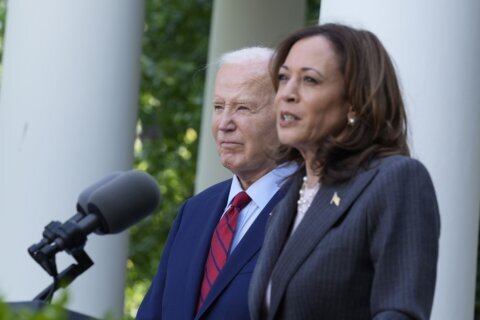The U.S. consumer price index, or CPI, rose by 5% year over year in March, well above the Federal Reserve’s long-term target of 2% inflation. For Americans concerned about falling stock prices and soaring inflation, U.S. I bonds may be an attractive option.
The U.S. Department of the Treasury recently announced I bonds will pay a 4.3% interest rate through October 2023. The current yield on I bonds is down from a peak of 9.62% in 2022, but I bond yields remain historically high. These I bonds are protected against inflation and backed by the U.S. government, making them essentially risk-free investments. A risk-free 4.3% yield may seem too good to be true, but there are several caveats investors should understand before going all-in on I bonds:
— What are I bonds?
— What investors need to know about I bonds
— Are I bonds right for you?
[Sign up for stock news with our Invested newsletter.]
What Are I Bonds?
Series I savings bonds are bonds issued by the U.S. Treasury that earn interest based on combining a fixed rate and an inflation rate. The fixed interest rate on the bonds remains the same for the life of the bond and is announced twice a year by the secretary of the Treasury. The fixed rate is applied to all I bonds issued over the following six months. I bond fixed rates are announced on the first business day of May and November each year.
The inflation rate for I bonds is also set twice a year, in May and November. The inflation rate is based on the most recent CPI reading.
The fixed rate on I bonds has been as high as 3.6% (in May 2000) but is currently just 0.9% — the highest fixed rate since 2007. Investors can see the entire history of both fixed and inflation I bond rates in this chart.
I bonds earn interest for 30 years, but investors can cash them any time after they are 12 months old. If an investor cashes an I bond before five years, the investor will lose the last three months of interest.
You can buy electronic I bonds online through the TreasuryDirect website or purchase paper I bonds when you file your federal tax returns. The maximum purchase limit per person for electronic I bonds is $10,000 per year, and the maximum purchase limit for paper I bonds is $5,000 per year.
On April 28, the Treasury announced the composite rate for I bonds issued from May 2023 through October 2023 is 4.3%. Those bonds have a 0.9% fixed rate and a 3.4% inflation rate.
What Investors Need to Know About I Bonds
Heather Comella, certified financial planner and planning success lead at employee financial wellness platform Origin, says I bonds can be an excellent opportunity for investors given cash is a terrible asset to hold during times of elevated inflation.
“I bonds are interesting to an average investor who seeks a guaranteed way to keep up with inflation. These types of bonds perform well in inflationary environments,” Comella says.
She says I bonds also provide certain tax advantages for investors.
“Interest is subject to federal income tax, but you can choose to defer when you report and pay taxes on the interest until it is actually received, giving a taxpayer with income that changes year over year some tax planning opportunity,” Comella says.
Carol Christie, certified financial planner at Free to be Finance, says investors should only buy I bonds if they have the financial flexibility to do so.
“Because it is forced savings for at least one year, the investor must have a cash account for unexpected expenses outside of the I bond investment and have a sufficient balance,” Christie says.
If an investor is forced to take on credit card debt or secure a personal loan to pay for expenses, Christie says the interest rates on that debt could easily offset the interest earned on the I bonds.
[READ: How to Invest in TIPS: Treasury Inflation-Protected Securities.]
Are I Bonds Right For You?
Once investors understand the risks and requirements associated with I bonds, some may see them as an excellent way to hedge the purchasing power of cash during periods of rising or high inflation. However, CPI inflation appears to have peaked at around 9% in June 2022, and the Federal Reserve is likely to maintain tight monetary policy measures to get inflation back down near its 2% long-term target as quickly as possible.
Taylor Jessee, investment advisor and founder of Impact Financial, says the headline returns on I bonds can be deceptive given the majority of the 4.3% rate is variable.
“If inflation suddenly drops to zero, you would get a much smaller interest rate going forward,” Jessee says.
In fact, he says I bonds only gained popularity in the past two years when inflation started to spike.
“Inflation has been next to nothing over the past 10 years, maybe even longer, so I bonds weren’t really an attractive investment opportunity. It’s because inflation has skyrocketed that all of a sudden everyone and their mom is talking about I bonds,” Jessee says.
More from U.S. News
9 of the Best Bond ETFs to Buy in 2023
9 Dividend Stocks to Buy as Inflation Protection
7 of the Best ETFs to Fight Inflation
I Bonds: The Risk-Free Asset Yielding 4.3% originally appeared on usnews.com
Update 05/02/23: This story was previously published at an earlier date and has been updated with new information.







